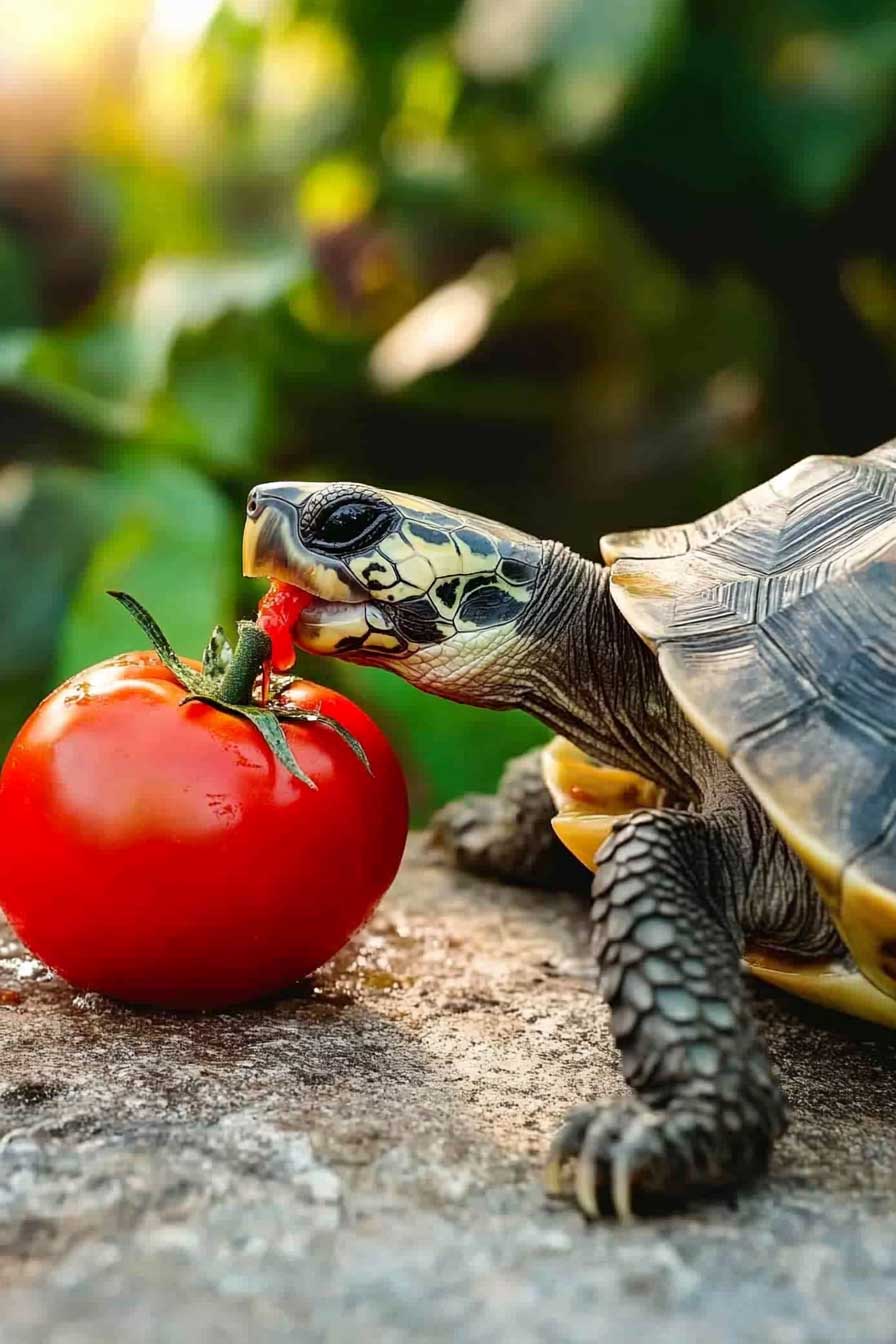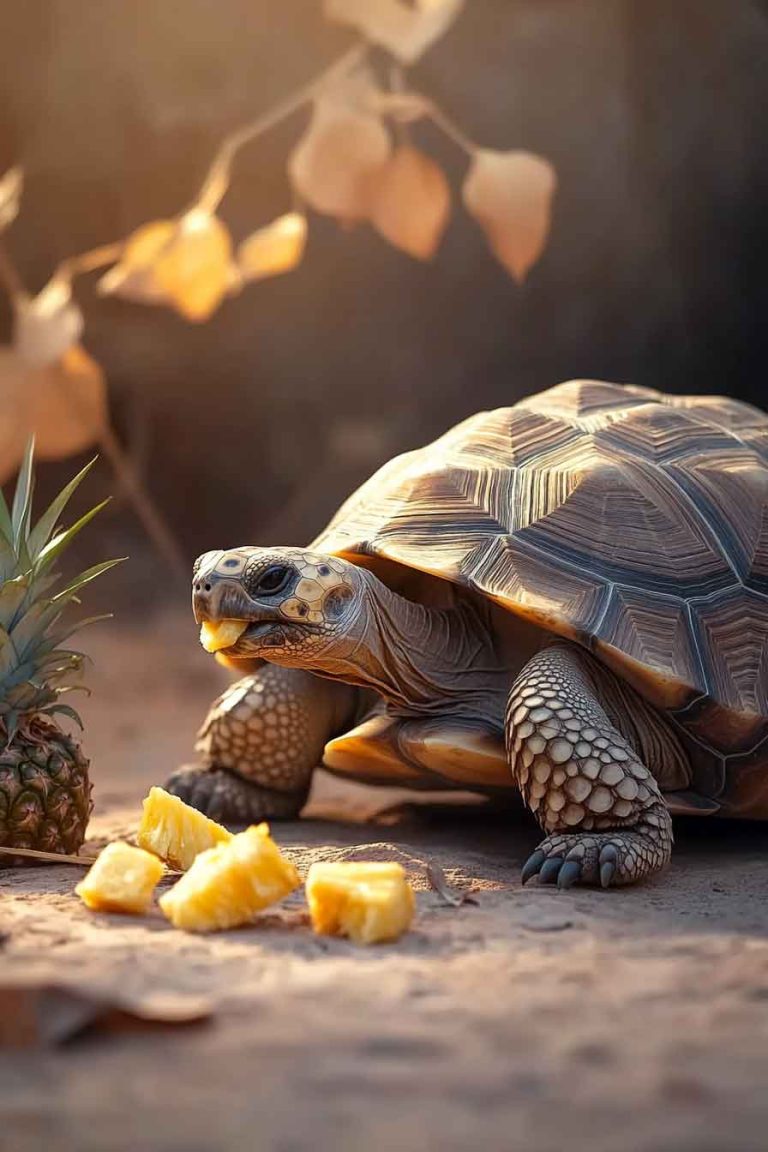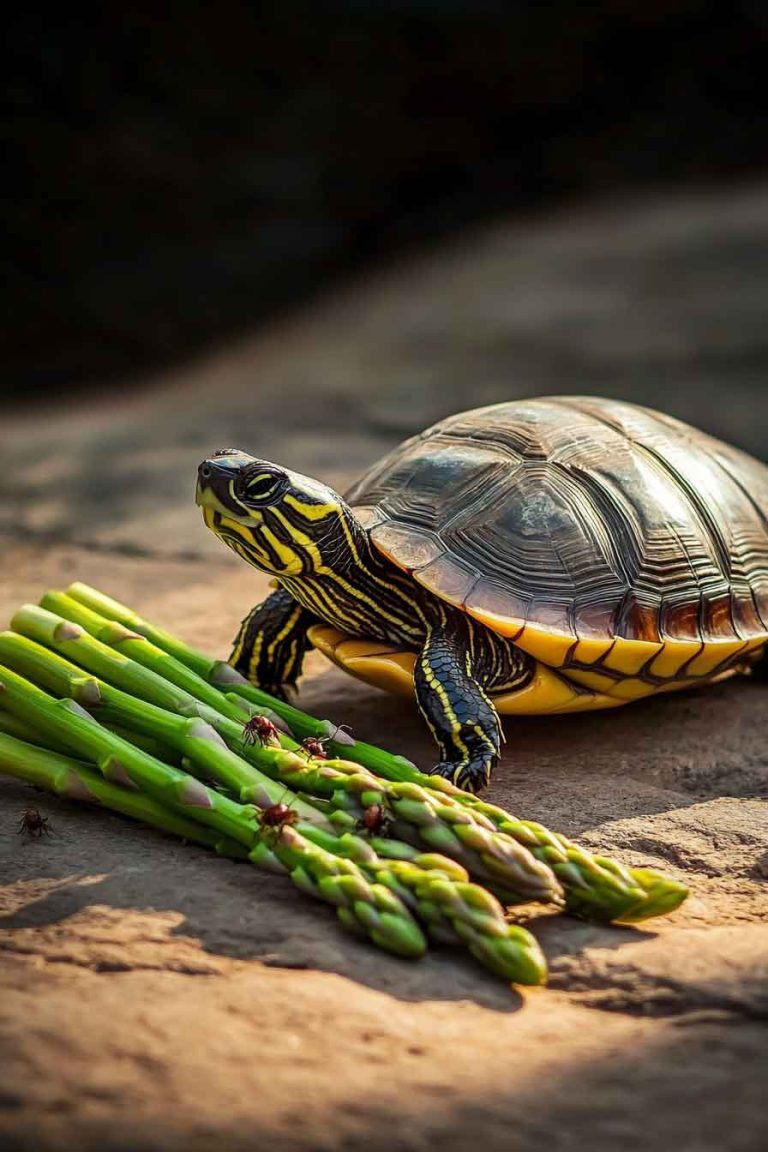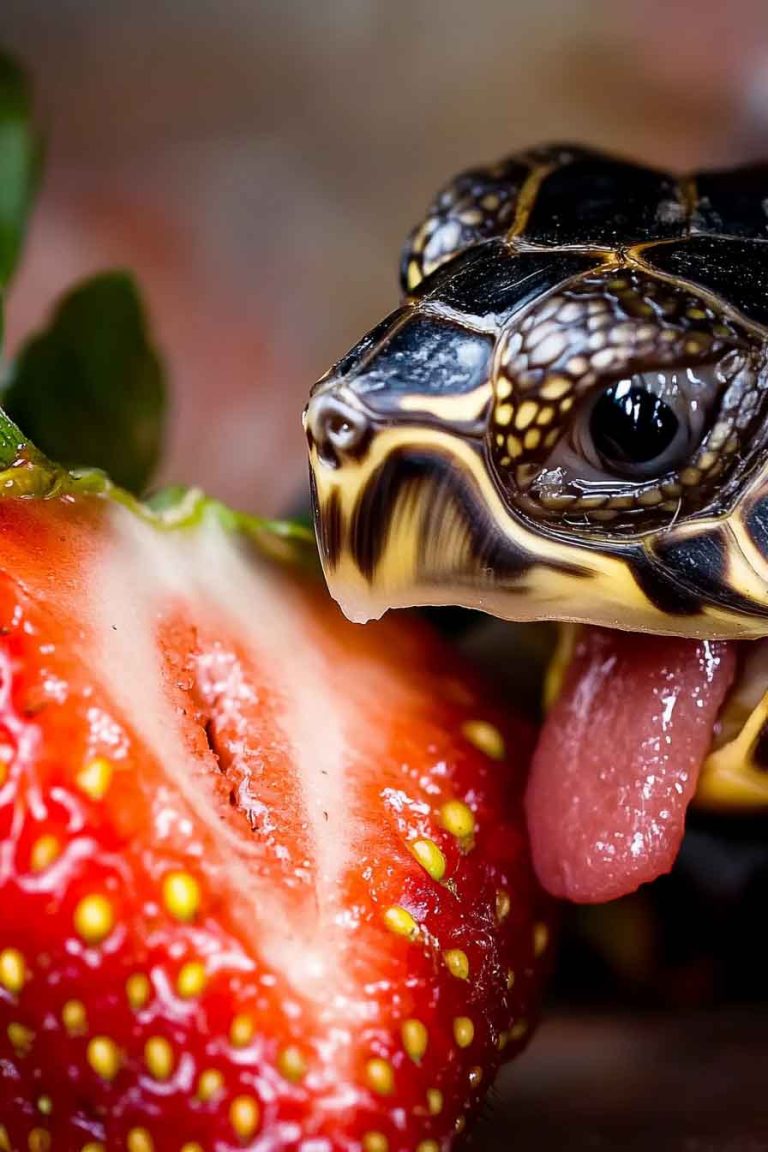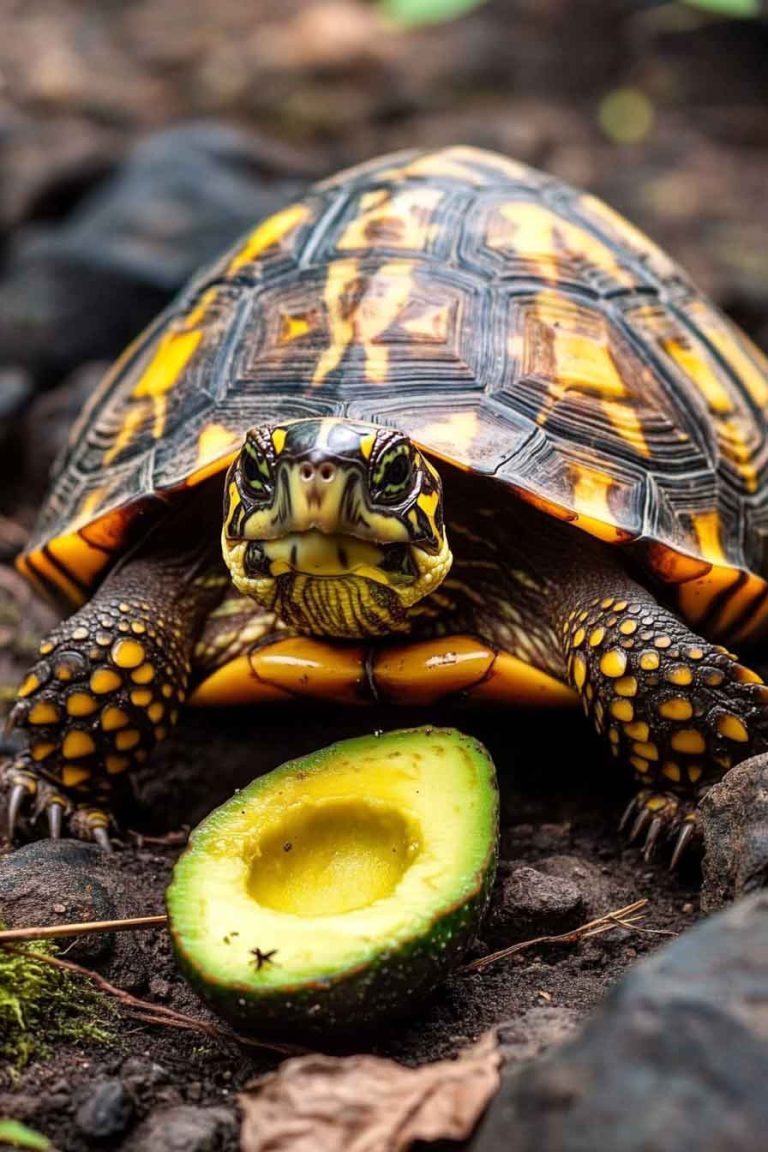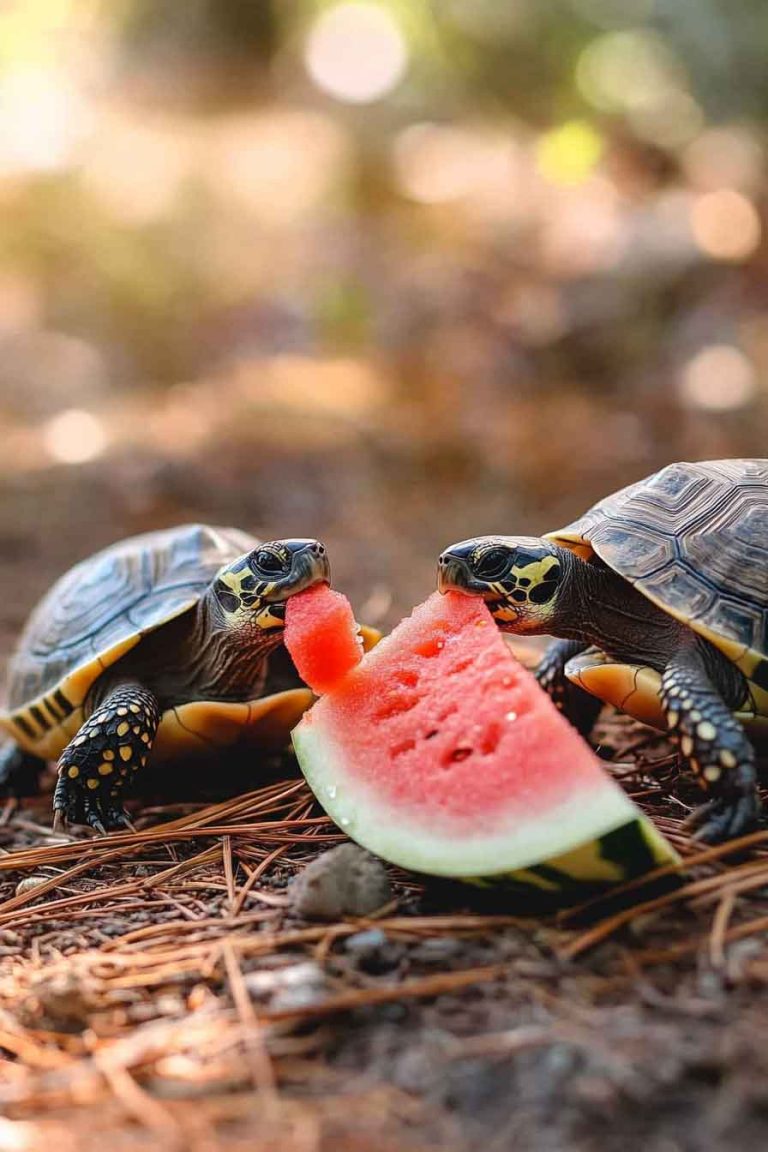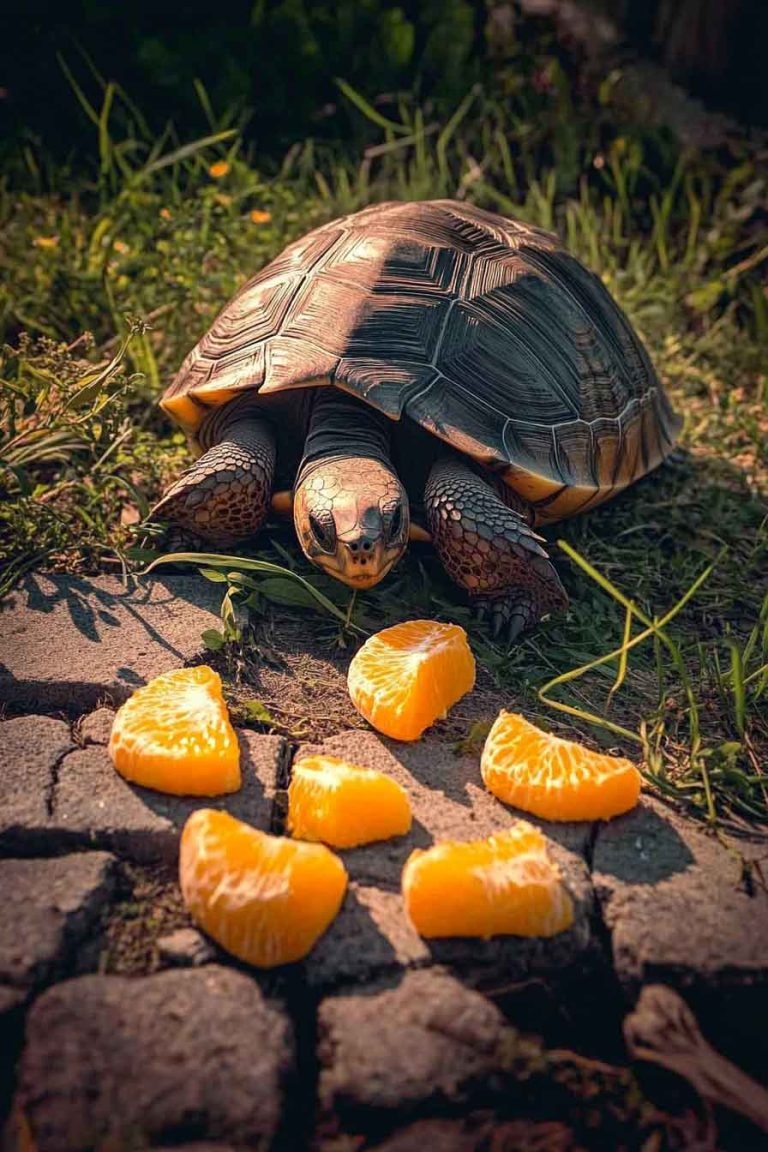Can Turtles Eat Tomatoes? Health Benefits & Risks Explained
If you’re anything like me, you’ve probably looked at a ripe, juicy tomato and wondered—can my turtle have a bite too? I mean, tomatoes are fruits, right? And they’re soft, colorful, and full of water. Seems like a nice little snack for our turtle friends. But before we go tossing tomatoes into their tank, let’s…
If you’re anything like me, you’ve probably looked at a ripe, juicy tomato and wondered—can my turtle have a bite too?
I mean, tomatoes are fruits, right? And they’re soft, colorful, and full of water. Seems like a nice little snack for our turtle friends. But before we go tossing tomatoes into their tank, let’s slow down and talk about it.
So… can turtles eat tomatoes?
Yes, they can. But it’s not as simple as “go ahead and feed them all the tomatoes they want.” There’s a lot we need to think about first. Tomatoes can be both helpful and harmful, depending on how much and how often we give them.
In this post, I’ll walk you through it all—from what’s in a tomato to what it does inside your turtle’s tummy. Let’s figure out if this red fruit is really worth it.
Can You Feed Tomatoes to Your Pet Turtle?
Here’s the quick answer: yes, but only in small amounts.
Turtles can eat tomatoes, but they should be given as a treat—not a regular part of their diet.
I used to think, “It’s just a tomato. What’s the harm?” But turtles have sensitive bodies. And tomatoes? They’re a bit tricky.
Tomatoes are high in water and sugar, and they’ve got something called oxalic acid, too. These things can mess with a turtle’s stomach if we’re not careful.
So while tomatoes aren’t toxic like onions or garlic, they’re still something we have to manage wisely.
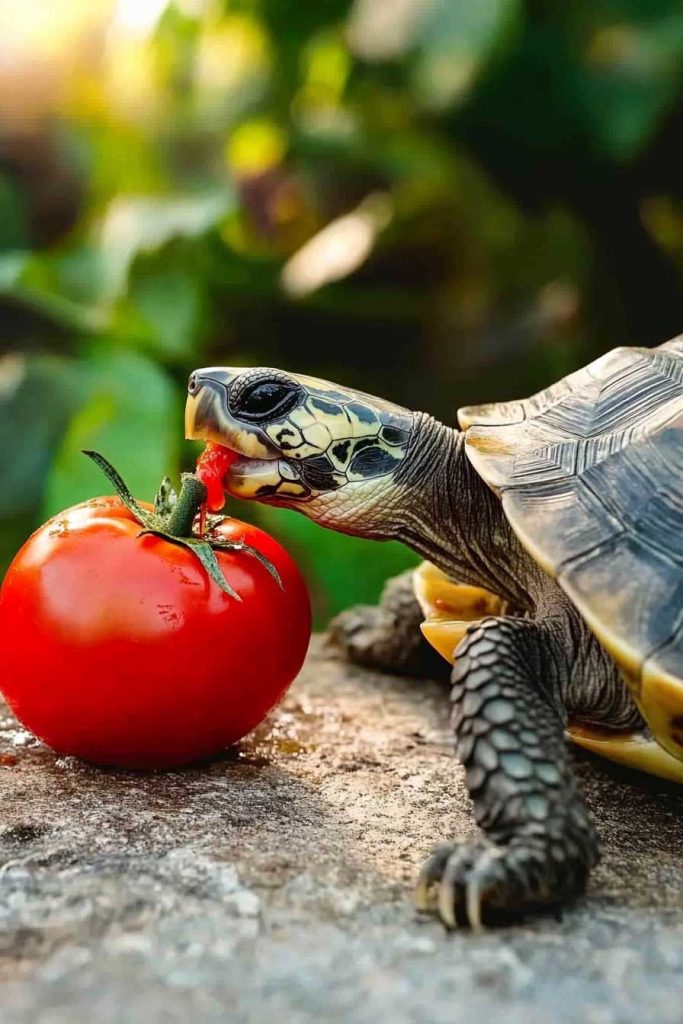
What’s Inside a Tomato? (And Why It Matters)
Let’s look at the stuff in 100 grams of raw tomato:
- Water: 94.5 g
- Sugar: 2.6 g
- Carbohydrates: 3.9 g
- Fiber: 1.2 g
- Protein: 0.9 g
- Calcium: 10 mg
- Phosphorus: 24 mg
- Vitamin C: 13.7 mg
- Vitamin A: 833 IU
- Lycopene: 2573 mcg
- Oxalic Acid: small amount
Now, this may look like just a list of numbers. But I want to point out two big things:
- Sugar and acid – These can be hard on a turtle’s tummy. Too much sugar can cause diarrhea. Too much acid? That can lead to stomach pain or even mouth sores.
- Calcium-to-phosphorus ratio – This one’s really important. Turtles need more calcium than phosphorus to stay healthy. But tomatoes have more phosphorus than calcium. That’s not ideal.
So yeah, tomatoes might look healthy… but they’re not really balanced for a turtle’s daily food.
Are Tomatoes Safe for All Types of Turtles?
Let’s break it down by turtle types:
- Box Turtles: These guys can eat a little tomato now and then. They usually enjoy fruits more than others, but still—just a bite.
- Red-Eared Sliders: Tomato treats are okay, but keep it rare. They’re more prone to shell issues if you mess up their diet.
- Painted Turtles: Same story. They’re used to leafy greens and bugs—not sugary fruits.
So yes, most turtles can eat tomatoes. But no turtle should eat them often.
Do Turtles Even Like Tomatoes?
From what I’ve seen with my own turtle, yep—they sure do.
They love the color, the juicy texture, the smell. It’s like candy to them.
But just because they like it doesn’t mean it’s good for them.
I always say—it’s our job to give them what they need, not just what they want.
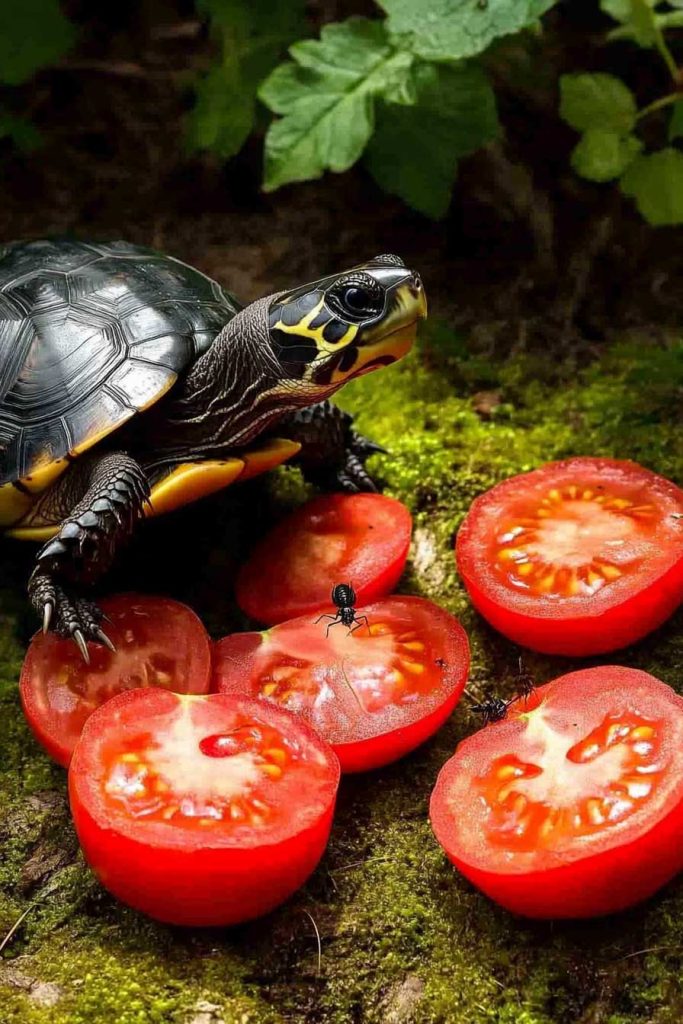
Health Risks of Feeding Tomatoes to Turtles
Alright, now let’s talk about the not-so-fun part.
Even though tomatoes aren’t toxic, they still come with risks. I learned the hard way when I gave my turtle too much tomato in one week. He got super sluggish, and his poop was runny. That’s when I realized I had to take tomato treats seriously.
Here’s what can go wrong:
Digestive Problems
Tomatoes are full of water and sugar. Too much of either can lead to a turtle with a bad tummy.
They might get diarrhea, or stop eating their regular food. And trust me, a sick turtle is not something you want to deal with.
Mouth and Throat Irritation
Tomatoes have a little bit of acid in them—especially the green parts like the stems and leaves.
That acid can make your turtle’s mouth feel sore or even burn a little. If they eat the green parts? It could be even worse.
Always remove stems and leaves. I never feed those to my turtle.
Calcium Problems
This one is big. Turtles need a good balance of calcium and phosphorus.
Tomatoes don’t have that balance. They’ve got too much phosphorus and not enough calcium.
And if we feed them tomatoes too often, their bodies might not get enough calcium to grow strong shells and bones.
That can lead to something called Metabolic Bone Disease. It sounds scary, and it is.
Shells can get soft. Bones can break. It’s very painful and hard to fix.
So yeah… tomatoes are fun, but only sometimes. Not every day.
So… How Often Can My Turtle Eat Tomatoes?
I stick to the rule of once every two weeks. A tiny piece—like the size of a grape or smaller.
It’s a treat. Like candy. We wouldn’t eat candy every day (okay… maybe we want to, but we shouldn’t).
Same goes for turtles.
If I see my turtle eating well and staying active, then I might offer a tomato bite once in a while. But it’s not something I add to their regular meals.

Can Baby Turtles Eat Tomatoes?
Nope. I don’t recommend it at all.
Baby turtles have tiny, sensitive bodies. Their stomachs can’t handle too much sugar or acid. They need foods that are nutrient-packed, not just tasty.
When my turtle was little, I stuck to leafy greens, calcium-rich pellets, and clean protein like bugs or boiled eggs. That’s what helps them grow strong.
Tomatoes can come later—when they’re older and their bodies are more stable. Even then, just a nibble.
Can Turtles Eat Tomato Leaves or Stems?
Okay, here’s the deal—no way.
Tomato leaves, stems, and even the little green tops on the fruit?
They all have a toxin called tomatine. It’s very dangerous for turtles.
I never let my turtle near any of that. I always wash the tomato, take off the green parts, and slice a tiny bit of just the red, ripe part. That’s the only safe piece.
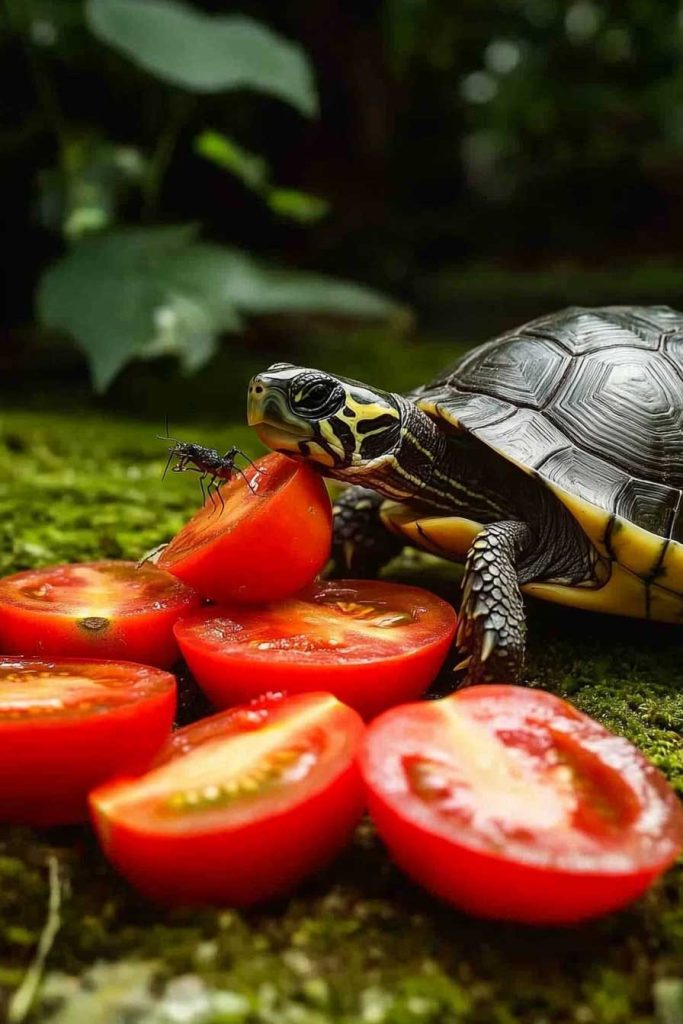
What About Cherry Tomatoes or Grape Tomatoes?
Yup—same rules.
Cherry and grape tomatoes are just smaller versions of regular tomatoes. They still have sugar, acid, and a poor calcium-phosphorus ratio.
They’re safe in tiny amounts, but I treat them like candy. One little piece every couple of weeks, that’s it.
Frequently Asked Questions (FAQs)
Can Box Turtles Eat Tomatoes?
Yes, but just a little. Box turtles enjoy fruits more than other turtles, but tomatoes should still be an occasional treat, not a daily snack.
Can Red-Eared Slider Turtles Eat Tomatoes?
They can eat small bits of tomato, but they’re sensitive to sugar and acid. Too much can cause diarrhea and shell issues. Keep it rare.
Can Painted Turtles Eat Tomatoes?
Yes, they can eat tomatoes once in a while. But don’t feed them too often—it can mess up their calcium balance and make their shells weak.
Are Tomatoes Healthy for Turtles?
Tomatoes have some good things—like Vitamin C and water—but they’re not super healthy for turtles. They’re more like a juicy snack, not a full meal. Use them sparingly.
Final Thoughts: Should You Feed Tomatoes to Your Turtle?
So, here’s what I do:
I let my turtle have a tiny bite of tomato now and then. Just the red part. No leaves, no stems.
It’s like a little fruit snack—fun, juicy, but not something we do every day.
Turtles need strong shells, steady energy, and good digestion. That comes from a balanced diet—not sugary fruits.
If you’re ever unsure about what to feed your turtle, it’s okay to pause and double-check. Better safe than sorry, right?
Thanks for hanging out with me and learning about tomato treats for turtles. I hope this helped you as much as it helped me when I first looked it up.
Till next time—let’s keep our little shelled friends happy and healthy.

